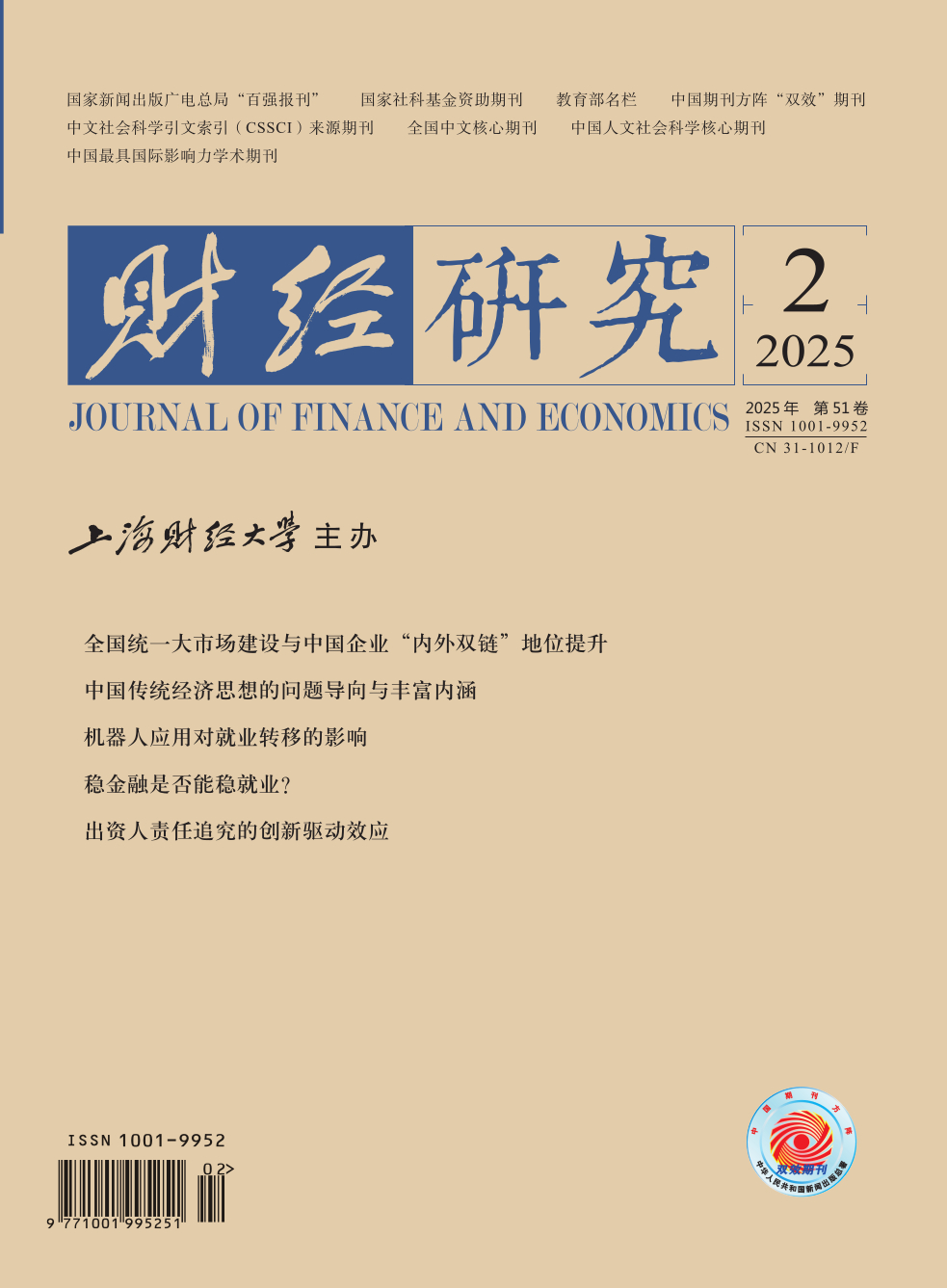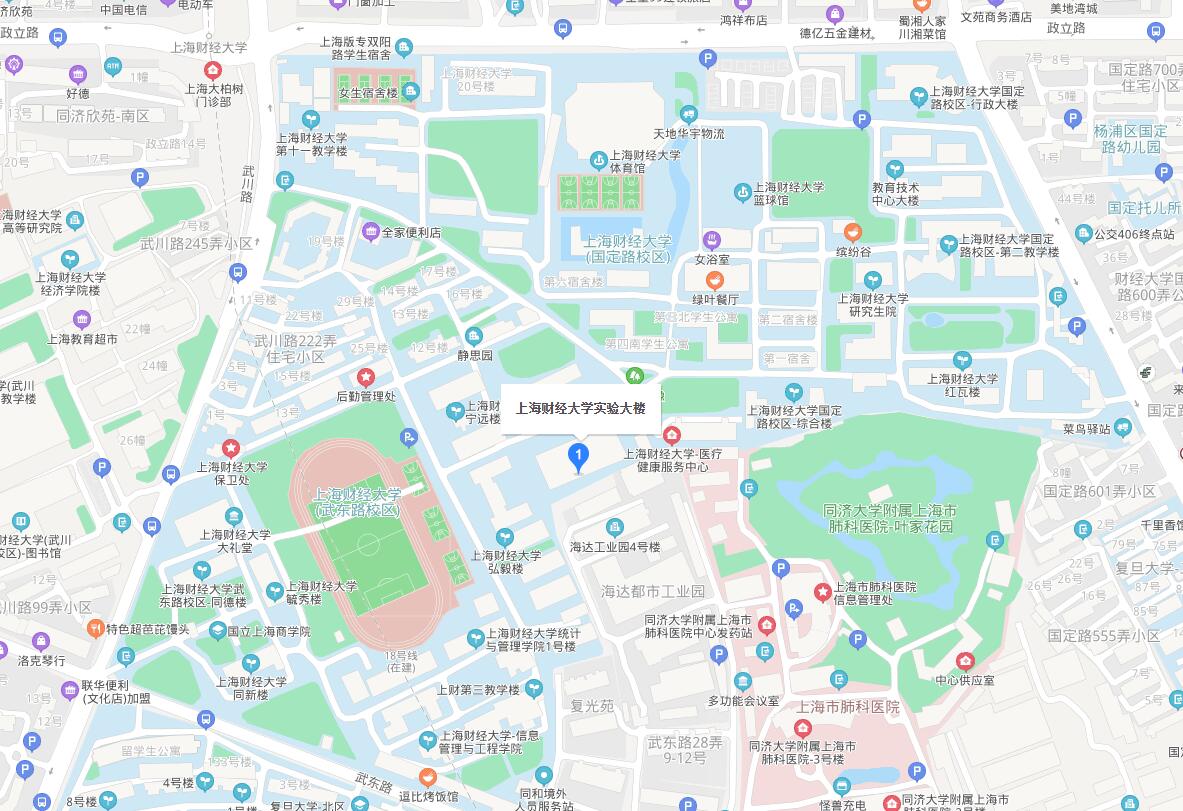文章以2007—2021年上市公司为研究对象,运用连续双重差分法考察了“稳金融”政策对企业劳动雇佣的影响。研究发现,资管新规实施后,影子银行化程度较高的企业劳动雇佣水平显著上升。机制分析显示,资管新规通过投资替代机制、流动性资金占用机制和银行信贷甄别机制影响企业的劳动雇佣水平。异质性分析表明,资管新规对劳动雇佣的促进作用在会计信息质量较高、高新技术属性明显以及内部治理完善的企业中更加突出。调节效应分析发现,企业对不确定性的感知程度越高,资管新规对企业雇佣的促进作用越强。经济后果分析显示,资管新规提升了影子银行化规模较大企业的全要素生产率,并降低了其经营风险。文章为防范系统性金融风险和促进就业提供了理论依据和政策参考。
稳金融是否能稳就业?——来自资管新规的证据
摘要
参考文献
3 韩珣,李建军,彭俞超. 政策不连续性、非金融企业影子银行化与企业创新[J]. 世界经济,2022,(4):31−53.
6 李建军,韩珣. 非金融企业影子银行化与经营风险[J]. 经济研究,2019,(8):21−35.
7 李青原,陈世来,陈昊. 金融强监管的实体经济效应——来自资管新规的经验证据[J]. 经济研究,2022,(1):137−154.
14 聂辉华,阮睿,沈吉. 企业不确定性感知、投资决策和金融资产配置[J]. 世界经济,2020,(6):77−98.
17 彭俞超,王南萱,邓贵川,等. 数字经济时代的流量思维——基于供应链资金占用和金融获利的视角[J]. 管理世界,2022,(8):170−182.
22 杨丰来,黄永航. 企业治理结构、信息不对称与中小企业融资[J]. 金融研究,2006,(5):159−166.
27 朱红军,汪辉. “股权制衡”可以改善公司治理吗?——宏智科技股份有限公司控制权之争的案例研究[J]. 管理世界,2004,(10):114−123.
28 Acemoglu D,Restrepo P. Robots and jobs:Evidence from US labor markets[J]. Journal of Political Economy,2020,128(6):2188−2244. DOI:10.1086/705716
29 Altamuro J,Beatty A. How does internal control regulation affect financial reporting?[J]. Journal of Accounting and Economics,2010,49(1−2):58−74. DOI:10.1016/j.jacceco.2009.07.002
30 de Chaisemartin C,D’Haultfoeuille X. Two-way fixed effects estimators with heterogeneous treatment effects[J]. American Economic Review,2020,110(9):2964−2996. DOI:10.1257/aer.20181169
31 Du J L,Li C,Wang Y Q. A comparative study of shadow banking activities of non-financial firms in transition economies[J]. China Economic Review,2017,46:S35−2996.
32 Frey C B,Osborne M A. The future of employment:How susceptible are jobs to computerisation?[J]. Technological Forecasting and Social Change,2017,114:254−280. DOI:10.1016/j.techfore.2016.08.019
33 Geng Z,Pan J. The SOE premium and government support in China's credit market[R]. Cambridge:National Bureau of Economic,2023.
34 Han X,Hus S,Li J J. The impact of enterprises’ shadow banking activities on business performance:A test based on mediator effect of investment scale and investment efficiency[J]. Emerging Markets Finance and Trade,2019,55(14):3258−3274. DOI:10.1080/1540496X.2018.1525358
35 Herrendorf B,Rogerson R,Valentinyi A. Two perspectives on preferences and structural transformation[J]. American Economic Review,2013,103(7):2752−2789. DOI:10.1257/aer.103.7.2752
36 Hsieh C T,Klenow P J. Misallocation and manufacturing TFP in China and India[J]. The Quarterly Journal of Economics,2009,124(4):1403−1448. DOI:10.1162/qjec.2009.124.4.1403
37 La Ferrara E,Chong E,Duryea S. Soap operas and fertility:Evidence from Brazil[J]. American Economic Journal:Applied Economics,2012,4(4):1−31. DOI:10.1257/app.4.4.1
38 Pagano M,Röell A. The choice of stock ownership structure:Agency costs,monitoring,and the decision to go public[J]. The Quarterly Journal of Economics,1998,113(1):187−225. DOI:10.1162/003355398555568
39 Roychowdhury S. Earnings management through real activities manipulation[J]. Journal of Accounting and Economics,2006,42(3):335−370. DOI:10.1016/j.jacceco.2006.01.002
40 Stiglitz J E,Joseph E,Weiss A. Credit rationing in markets with imperfect information[J]. The American Economic Review,1981,71(3):393−410.
41 Wang Y Z,Chen C R,Huang Y S. Economic policy uncertainty and corporate investment:Evidence from China[J]. Pacific-Basin Finance Journal,2014,26:227−243. DOI:10.1016/j.pacfin.2013.12.008
42 Yu Z Q,Xiao X. Shadow banking contraction and innovation efficiency of tech-based SMEs-based on the implementation of China’s New Asset Management Regulation[J]. Eurasian Business Review,2022,12(2):251−275. DOI:10.1007/s40821-021-00201-0
引用本文
韩珣, 安然, 彭俞超. 稳金融是否能稳就业?——来自资管新规的证据[J]. 财经研究, 2025, 51(2): 109-122.
导出参考文献,格式为:





 131
131  128
128
